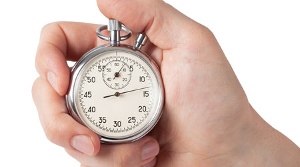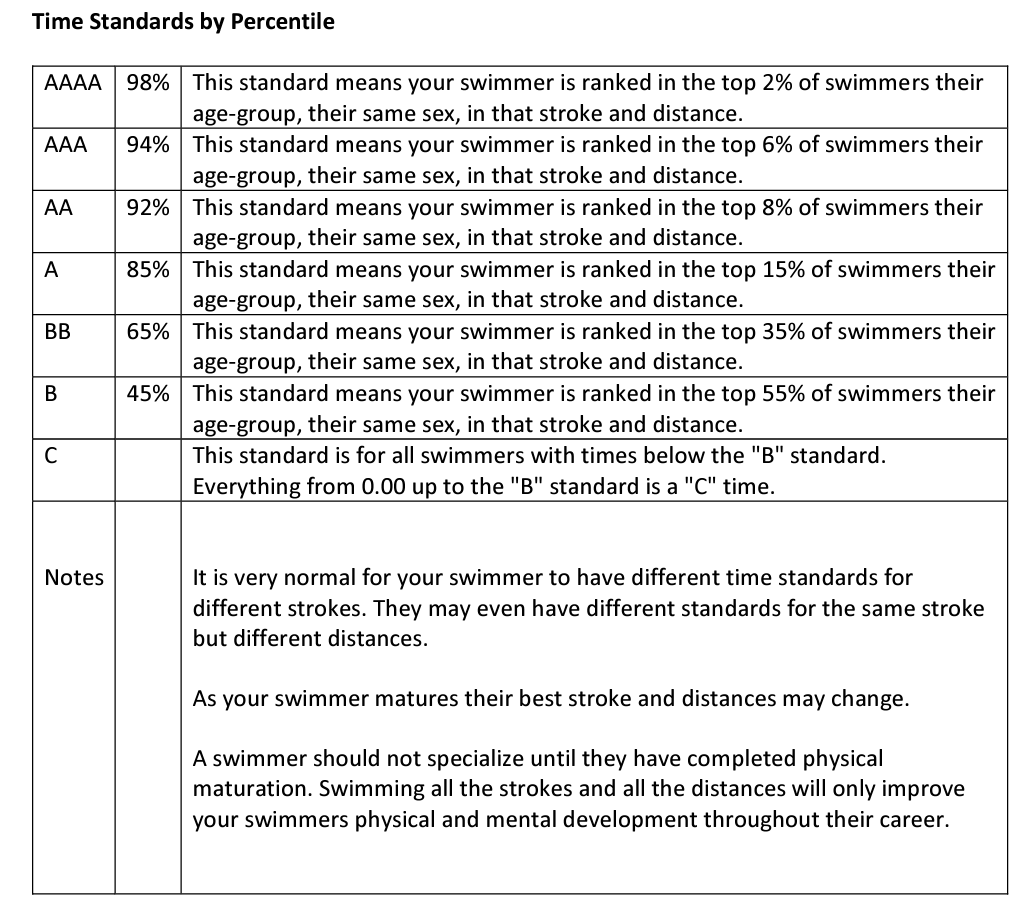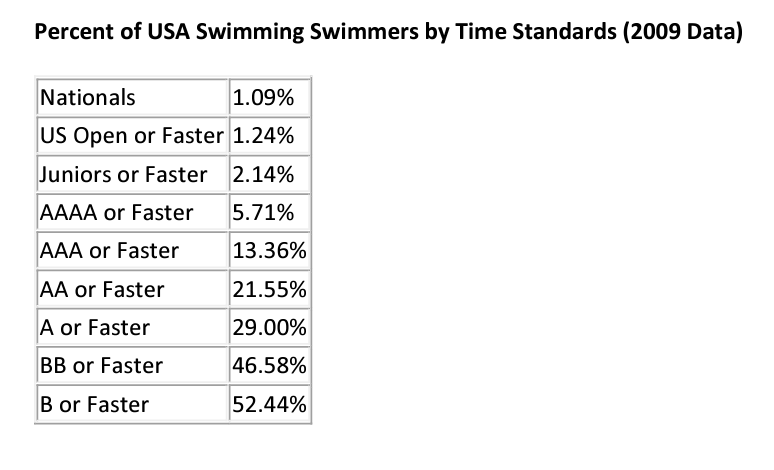How Age Group Time Standards are Determined

According to a TeamUnify explanation in May of 2018, with "Swimming Time Standards Explained" by Mat Luebbers:
- All swimmers are ranked according to their best achieved time in each event.
- A swimmer must swim an event at a sanctioned meet for the time to be official.
- A swim must be performed legally to be accepted. (No disqualified times will be accepted.) All swimmers legal times from each meet are then loaded up to the USA Swimming national database. Click here to look up your swimmers times.
Age Group motivational standards are set on a four year, or quad, base. As of the publishing of this original article, Age Group standards started on 9/1/2012 and run through 8/31/2016.
To start, the last time of the top 16 (or top 10) for the previous four years is compared to the 16th fastest time in an age group for the current year. If there is no difference, the motivational time standard remains the same.
USA Swimming Top-16 Based Time Standards – B, BB, A, AA, AAA, AAAA - USA Swimming publishes sets of time standards for various reasons. One of the reasons behind standards is their usefulness for setting goals. They are also used to control the size of swim meets, as each higher or faster level in the standards has fewer swimmers - as the standards get faster, a smaller number of swimmers achieve them. Almost every swimming federation in the world uses some form of stepped standards within their system.
Standards can also be used to offer swimmers a general idea how they match up with other swimmers in their age group and between age-groups, but raw times work better within age groups. In a general sense they can be used to compare swimmers in different age-groups with each other, but just because a swimmer has "AAA" times as a 9-10 year old does not mean that same swimmer will get "AAA" times as a 13-14 year old. There are several reasons for this, including differing maturation rates, changing interests, and even injuries.
NOTE: It is very normal for your swimmer to have different time standards for different strokes. They may even have different standards for the same stroke but different distances. As your swimmer matures their best stroke and distances may change. A swimmer should not specialize until they have completed physical maturation. Swimming all the strokes and all the distances will only improve your swimmers physical and mental development throughout their career.
Bottom line - Time standards are great for goal setting and should be used to motivate your swimmer, but while improvement is desired it should not be required. Be patient and let your athlete improve at their own pace. P.S. Never compare your swimmers success to another swimmer. All swimmers are individuals with unique abilities and each will develop at their own rate.







